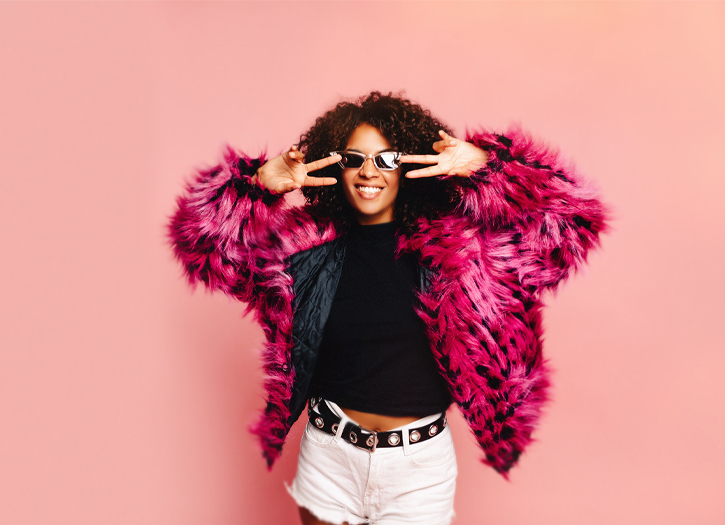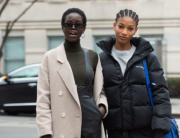2000s fashion is often described as being a global mash up, where trends saw the fusion of previous vintage styles, global and ethnic clothing, as well as the fashions of numeous music.
When the 2000s kicked off, the fashion was profoundly influenced by technology. Around the year 2000, there was a monochromatic futuristic approach to fashion, with metallics, shiny blacks, heavy use of gray, straps, and buckles becoming commonplace. This was called “Y2K fashion”. The apparel was made to be as dark, reflective, technological, and as sexy as possible. When the original iPod was introduced in 2001, the white earbuds, as well as the gadget itself, became something of an accessory for early adopters.
Particular pieces of Y2K clothing included mesh tops, wraparound sunglasses, wireframe rectangle glasses, box-pleated skirts, handkerchief tops (often in a metallic pattern such as silver or gold for a disco feel), satin skirts, leather skirts, concert t-shirts with rhinestones, sparkling shoes, halter tops, sequinned pants (popularized by Peter Morrissey), and embroidered and sequinned tops (inspired by Easton Pearson), along with the famous pearl printed black cocktail dress by Karen Walker, which was successful worldwide. In the year 2000, some of the casual women’s and girl’s fashion trends were oversized sunglasses, mini shoulder handbags/purses, aviator sunglasses, oversized hoop earrings, jeans worn for numerous occasions (such as mid-rise, boot-cut, fabric accents down the sides, fabric accents sewn into the flares, lace-up sides and tie-dye[), wedge flip flops, hot pants, denim jackets, chunky sweaters, pashmina scarves, Skechers, belly shirts, and tube tops.
In Africa, Europe, North America, East Asia, South America, and Oceania, the early 2000s saw the continuation of many mid and late 1990s fashions due to the continued influence of teen pop stars such as Britney Spears and Christina Aguilera, such as the military look, while introducing newer more vaguely dystopian postmodern trends. From 2001 onwards, women wore long-sleeved shirts with bell sleeves, cowl-neck tops, crop tops, Burberry, hoodies, flare jeans, hip-huggers, low rise pants, white jeans, whale tails, cargo pants (especially ones made out of silk, satin, and velvet) hip-hop inspired sweatpants, daisy dukes, thong underwear, and solid bright-colored tights.
9/11 and the mortgage crisis of 2001 impacted fashion by bringing in a new wave of conservatism. This created a rise in denim, the American fabric of the working person. Jeans became acceptable in every situation, from the supermarket to the red carpet. It was a slow shift to conservatism, seen in how jeans started low-rise in reflection of the sexy Y2K style and moved through various waistlines and leg widths. As mentioned with the social classes, logos became a form of stability and comfort in fashion.Perhaps in reaction to the streamlined, futuristic, outer space-themed Y2K styles of the year 2000, distressed denim became popular in America from 2001 to 2008. Pants became lower waisted and significantly more flared than they were previously, and often featured elaborate embroidery rather than the utilitarian, no-frills style of before.







Add Comment